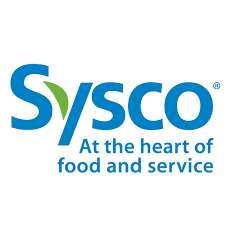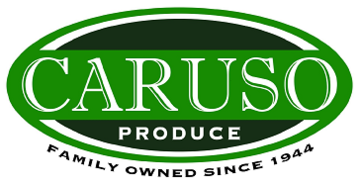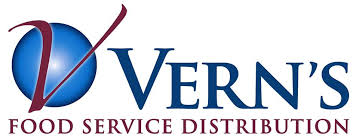How does the fresh produce industry earn the business and sustain the trust of today's conscious consumers committed to responsible purchasing?
Earlier this year, The Packer and PMG's GOPEX 2024 explored this intersection of fresh produce and conscious consumerism with industry leaders from across the supply chain.
Why is the conscious consumer important to fresh produce?
“The conscious consumer is 39% more likely to purchase produce than every other segment,” said Alex Kalausich, produce lead for Circana's fresh foods group, speaking at the opening session
of GOPEX.

This display of Crespo Organic Mangoes offered shoppers information about different mango varieties, stages of ripeness and the family behind the organic mangoes. It also featured a QR code for customers interested in learning more about the mango packing process. (Photo courtesy of Brian Dey)
By analyzing comprehensive retail data, Circana's market researchers segment consumers by belief and shopper behavior with the aim of delivering actionable industry insights. When it comes to the conscious consumer, this segment is motivated by health, wellness and sustainability, said Kalausich, who added that this shopper spans a wide swath of generations, incomes and family sizes.
Organics are a key component of a conscious consumer's buying habits, Kalausich said, as are other sustainability-focused products.
“Younger shoppers will be the sort of catalyst for sustainability and all the attributes around it being mainstream … driven by millennials first and then Gen Z,” he said.
Kalausich revealed Circana's 2024 outlook for the fresh produce industry, which shows growth of 2% to 4% in dollar sales, growth of about 1% in volume sales and 1% to 2% growth in price per volume.

This World Pear Day display invited shoppers to connect with the farmer and farms behind the fruit by accessing a QR code from their mobile devices. (Photo courtesy of Brian Dey)
In-store displays that drive sales
Kalausich's presentation also explored the produce department's promotional efforts in the last six years. From 2018 to 2020, displays were a key tactic in driving sales. But with COVID-19 and related challenges, displays have since taken a back seat.
As food inflation and increasing concern about the economy weigh on today's consumer, displays that inform and inspire may be even more important to continue to drive produce sales in-store.
Especially with produce being front and center in-store, displays can be greatly beneficial, said Kalausich. “Displays are the most efficient from a [sales] lift standpoint,” and offer retailers “the most bang for their buck,” he added.
Meaningful merchandising
GOPEX also explored the power of fresh produce displays that connect with the conscious consumer.
During a panel discussion on innovation in the produce industry, Brian Dey, senior merchandiser and trainer at Four Seasons Produce, Ephrata, Pa., shared examples of in-store displays designed to reach this increasingly important fresh produce shopper.
“This is an example of connecting shoppers using QR codes that the Pear Bureau, and now many others, use on their bins, boxes and packaging,” Dey said. “These types of promotions and merchandising allow consumers to connect to the farms and farmers themselves and see where — and in many cases — how their food is grown.

This cherry display is educational and helped familiarize consumers with the brand as well as the sustainability efforts of the grower-packer-shipper. (Photos courtesy of Brian Dey)
“It's simple dual-purpose merchandising that is both functional and educational,” he added.
Educating the consumer in an authentic way about a brand's sustainability efforts goes a long way in reaching the conscious consumer, Dey says.
Dey used a dynamic display featuring Stemilt cherries to communicate a bigger sustainability story to shoppers.
“I was able to chat with customers and share that Stemilt is an Equitable Food Initiative-certified company, which uses ladybugs and dragonflies to help control natural pests; has an amazing composting and reusable resource program; and earned a certification for Bee Friendly Farming.
“How many consumers that walked into this store would have expected to read or hear that story? They come in for cherries, apples and pears and see a clean, well-merchandised and impactful display of fruit with POS signage, and they leave with a better understanding of how the fruit got there,” Dey continued. “Then when they get home, they check out the website and get a full rundown on Stemilt — who they are and what they are all about.”

Signage that engages shoppers by sharing the economic impact of their purchases, like this banana sign from Healthy Living Market, also can be a powerful promotional tool. (Photo courtesy of Brian Dey)
Signage with impact
Another way to connect with today's conscious consumer is by sharing the economic impact of their purchases, Dey says.
Healthy Living Market, an independent grocer with three locations in Vermont and New York, hung informative banana and avocado signs above its produce department that shared a snapshot of its customers' buying power in 2022.
“What sets our bananas apart from the bunch?” the sign asked. “In 2022, our guests purchased 400,960 Equal Exchange bananas, which equates to $64,404 paid to small farmer co-ops,” the Healthy Living Market sign read.
A similar sign for avocados let customers know they had purchased more than 100,000 Equal Exchange avocados in 2022, which translated to $94,864 paid to small farmers.

This eye-catching Andy Boy Organic broccoli rabe display told a story of freshness, while also sharing nutritional information and health benefits of the flavorful superfood. (Photo courtesy of Brian Dey)



















